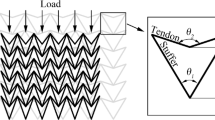Abstract
Until recently, passenger cars have primarily interested in pedestrian protection performance. Nowadays, however, it is important for a sport-utility vehicle (SUV) to meet the bumper system standards for pedestrian safety. For a SUV bumper system, there are some difficulties in attaining a high level of pedestrian performance for the lower legform. An SUV has a high bumper position from the ground level, and the bumper approach angle must also be secured, which has an effect on car insurance fees. Due to these reasons, it is difficult to meet the pedestrian performance of the lower legform for an SUV. In this paper, a comparative study was performed on various SUV bumper systems, and a concept model for a SUV bumper system was developed, which is expected to meet the pedestrian performance by using the Pugh method. The design control factors were defined to affect the bumper pedestrian performance through the experiences of tests and analyses. For the noise factor to affect the pedestrian performance, the deviation of the impactor position was selected at the moment of impact. The design control factors were optimized by using the Taguchi optimization technique. For the Taguchi method, an L18 orthogonal array table of design control factors was used in the optimization process. Particularly, for the optimization of the bumper corner region, an optimization analysis was performed three times to meet pedestrian performance. Based on the results of the Taguchi optimization method, the sensitivity of the bumper design parameters was studied, and a new SUV bumper system is proposed that satisfies the pedestrian performance of the lower legform. The optimized bumper system should obtain a full Euro-NCAP score of 6 points for the bumper test. The pedestrian performance of the optimized bumper system is validated by using a CAE (Computer Aided Engineering) analysis, which has been proven to be in accurate. A comparison between the test and analysis results is shown for the validation of accuracy. By using the optimized bumper system, the tests and development costs of a bumper can be reduced.
Similar content being viewed by others
References
Arora, J. S. (1989). Introduction to Optimum Design. McGraw-Hill. New York.
European New Car Assessment Program Pedestrian Testing Protocol. (2008). Version 4.2.
Lee, H. Y. (1995). Stiffness Analysis and Optimal Design of Thin Walled Beam Structures. M. S. Thesis. Kookmin University.
Lee, K. H. and Joo, W. S. (2002). Optimum design of an automobile front bumper using orthogonal array. Trans. Korean Society of Automotive Engineers 10,6, 125–132.
Oh, O. and Sin, H. C. (2007). Size optimization of an engine room member for crashworthiness using response surface method. Int. J. Automotive Technology 8,1, 93–102.
Park, D. K., Yim, H. J., Kim, M. S., Park, J. and Heo, S. J. (2005). Shape optimization of bumper beam cross section for low speed crash. SAE Paper No. 2005-01-0880. 2005 SAE World Cong., Detroit, Michigan.
Schuler, S., Mooijman, F. and Nanda, A. (2003). Bumper systems designed for both pedestrian protection and FMVSS requirements. SAE Paper No. 2003-01-0214. 2003 SAE World Cong., Detroit, Michigan.
Schuster, P. J. and Staines, B. (1998). Determination of bumper styling and engineering parameters to reduce pedestrian leg injuries. SAE Paper No. 980361.
Author information
Authors and Affiliations
Corresponding author
Rights and permissions
About this article
Cite this article
Park, D.K., Jang, C.D. Optimum SUV bumper system design considering pedestrian performance. Int.J Automot. Technol. 11, 819–824 (2010). https://doi.org/10.1007/s12239-010-0097-y
Received:
Revised:
Published:
Issue Date:
DOI: https://doi.org/10.1007/s12239-010-0097-y



